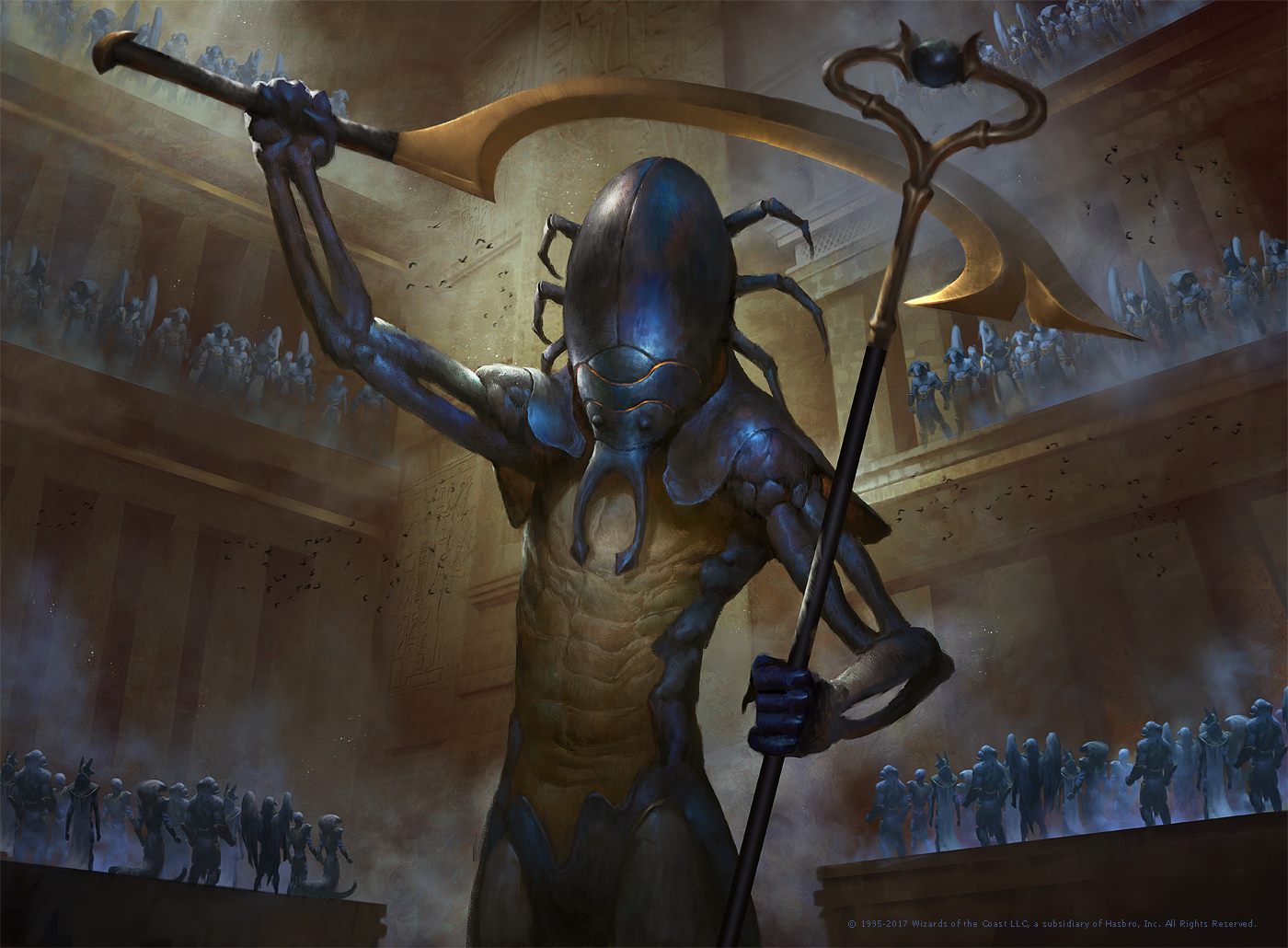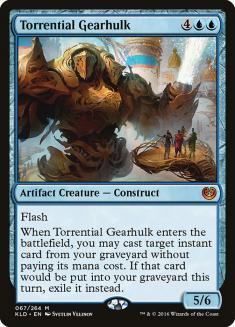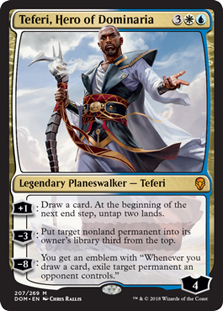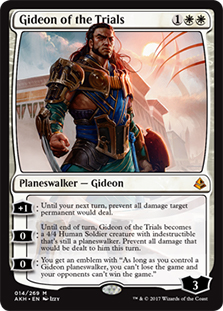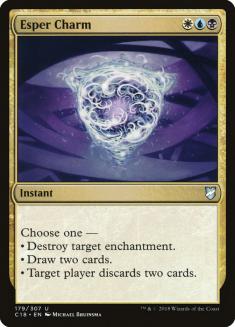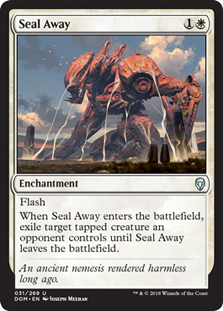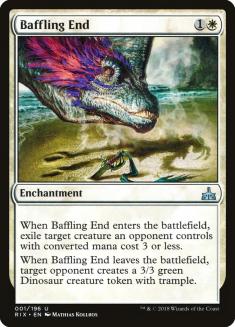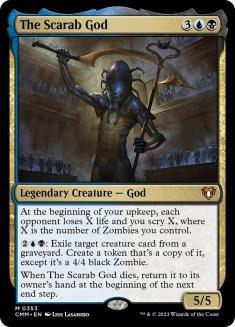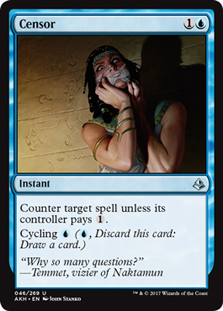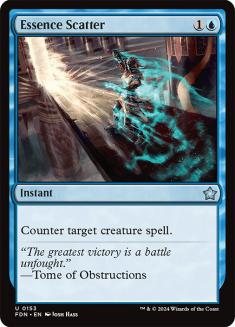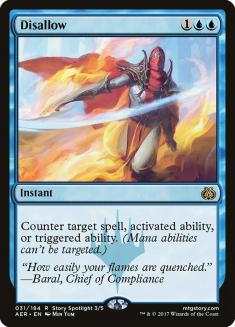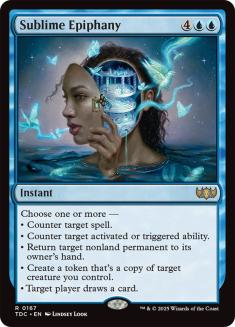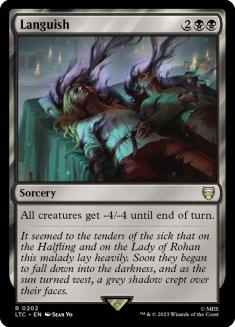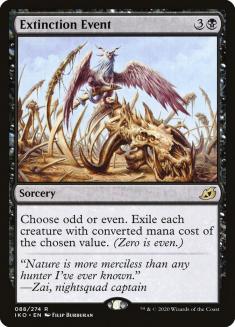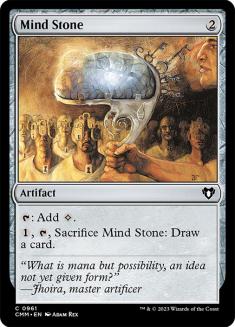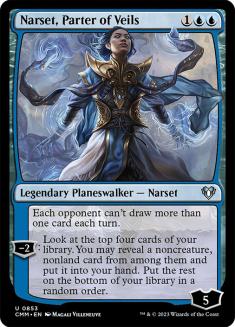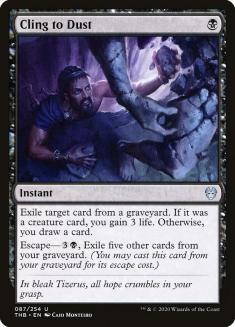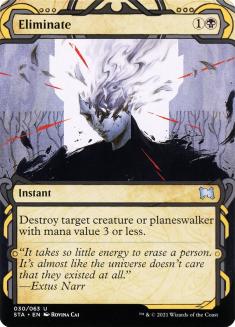The Historic format has a vast sea of uncharted territory. It is easy to get content as a control enthusiast there, settling in with Gideon of the Trials, Pact of Negation, and the protection of Teferi, Hero of Dominaria. The powerful disruption and win conditions in the Azorius Control deck are good enough to compete in the format, but there is much more to explore.
With every Remastered set, more doors open control players everywhere. Each block had something legendary that assisted control players in disrupting spells, drawing cards, or winning the game on the battlefield. In the most recent of these sets, Torrential Gearhulk burst onto the scene to remind us all why it was the backbone of control in its heyday. Even though it has lost some pep in its step, surrounded by broken aggro decks and banned Simic cards that we just cannot shake, it still has the potential to run away with a match upon resolution.
Torrential Gearhulk has not felt like the perfect fit in Azorius Control, which depends on planeswalkers to overtake the opponent. Gideon of the Trials; Teferi, Hero of Dominaria; and enchantment-based removal do not work well with the giant flash creature and are non-negotiables when building an Azorius Control deck. Instead, the interaction between Pact of Negation and Gideon of the Trials makes it potent.
Even if that were to get removed for more reactionary spells, Teferi, Hero of Dominaria is not going anyway. I am always willing to sacrifice four slots to one of the best planeswalkers of all time, regardless of its lack of synergy with the rest of the deck. Even with lists that are altered to accommodate Torrential Gearhulk, the true potential of it in Historic is out of reach in Azorius Control.
Azorius Control is still one of the best decks in Historic and I would confidently suggest playing it in a competitive tournament. The other possibilities for control fans lie in a black-based strategy, which has eluded investigation until now.
Esper Control is my bread and butter but cannot be done in Historic effectively. Even in Pioneer, the manabase is punishing for a three-color deck that does not include the broken green elements. For my Esper Control kicks, I still sling Esper Stoneblade from time to time, yearning for the day that proper mana returns to one of the newer formats to accommodate the great shard. For now, I look to two-color control decks that best attack their respective metagame.
Creatures (5)
Lands (23)
Spells (32)

This deck takes me back to one of my favorite Standards. Torrential Gearhulk was always great; however, it exceeded that level of glory with the assistance of an ancient God. The Scarab God has been somewhat lost in the Historic metagame shuffle, due to the aggressive nature of our competitors. It is not bad against decks with a lot of early pressure, so long as the support spells are cheap and effective.
Thoughtseize is a recent addition to Historic and has made a name for itself in the control decks of old. I have played the greatest hand disruption spell religiously in every format it has been legal in, even though the life loss drawback hits control the heaviest. That life loss is an acceptable casualty when having the choice of any nonland card in an opponent’s hand, especially in the current Historic format. Stripping away a Nissa, Who Shakes the World or future problematic Hydroid Krasis is a huge play for one mana, which makes Dimir Control that much more desirable to play.
In the one-mana department, even Thoughtseize has some competition.
Fatal Push is one of the greatest removal spells ever printed and returns to Historic at the perfect time. With Mono-Red Goblins, Rakdos Sacrifice, Four-Color Midrange, and everything in between having ample targets for it, Fatal Push is back in the driver’s seat for control. Decks are built around the cheap disruption since win conditions have not been hard to find these days. There is always some resilient creature, ridiculous planeswalker, or flash threat that has the capability of slamming the door shut on any opponent at a moment’s notice. Early removal, hand disruption, and counterspells provide control championships. Fatal Push is the spell that black-based control has been waiting on to get started.
Dimir Control is stronger by a mile in the removal department when compared to Azorius Control. Seal Away and Baffling End look silly when compared to Fatal Push and Eliminate. The reach that black removal spells have, combined with their mana cost and instant-speed nature, creates a strong argument for the switch in control strategies. The overall strength of the white-based win conditions is still better; however, The Scarab God is not one to ignore with strong removal by its side.
The Scarab God feasts on deceased Torrential Gearhulks, but that is not good enough of a reason to play it in Historic. Using removal and counterspells in the early-game should create a robust enemy graveyard for Dimir Control to resurrect. The type of creatures that are killed are meaningless, since The Scarab God boosts their power and toughness, and adds an additional trigger for better card quality with life loss attached. It was the ultimate win condition when it was in Standard, especially when the opponent could not exile it in a timely fashion. Looking at the removal played in Historic, enemies will have a similar fate after it resolves.
The counterspells I included mirror those from Azorius Control for good reasons. Censor is the premier early-game counterspell that assists control users in hitting land drops. Right behind that in the two-drop section is Essence Scatter, which has been as solid as they come in Historic. Every deck is playing creatures, something we should suspect as the power level has no sign of dropping for that card type. Essence Scatter has basically served as an early-game answer to everything, allowing Dimir Control to build mana resources for the end-game onslaught.
Disallow has seen play in Historic because of the absurd power level of Simic cards that still roam the multiverse. Stopping a giant Hydroid Krasis can be the difference between an easy victory or a swift defeat, which is what Disallow provides. Often it will be a Cancel that gets reused by a future Torrential Gearhulk, but that is something control players have come to accept. Looking for anything better than an Absorb is asking for too much, so we sleeve up Disallow and get to work.
I miss the power of Pact of Negation in this deck, but it is too weak without Gideon of the Trials for control. Tapping five mana the turn after it resolves is too tall of an order for Dimir Control. For me to get my expensive spell kicks, Sublime Epiphany has joined the team.
Before you scoff at the idea of a six-mana counterspell, check out the complete synergy extraction it provides the user when Torrential Gearhulk is involved. Using the first cast to copy one on the battlefield is busted enough, but casting a future one to flash it back, creating another copy while getting the entire paragraph of effects, is pure bliss. There were two copies in the maindeck, but the aggressive metagame of Historic makes it a risky move. Once the format gets completely dominated by Uro, Titan of Nature’s Wrath, the Sublime Epiphany count will be cranked up.
The mid-game of Dimir Control is dominated by the black-based removal that does its best sweeper impersonation. Languish is the key against Mono-Red Goblins but can be weak against Four-Color Midrange when the creatures are well out of range. This is the same for large creatures, or creatures that enter the battlefield from the graveyard, making Extinction Event a key ally in the war against aggro.
It is tough to say which sweeper is stronger in Historic now, but I am leaning toward Languish still. Beating Mono-Red Goblins and generic red-based aggro is tough enough for control but is even harder when the Turn 4 sweeper is not a guarantee. If the metagame shifts away from the early-game swarm, then Extinction Event will overtake Languish. For now, I plan on killing all creatures that entered the battlefield Turn 4 and before with confidence.
Wrath of God is clearly a better spell than all these imposters, but the core of black-based removal is much stronger in Historic. Even with planeswalkers, white has a difficult time taking just one down that has resolved. Cards like Elspeth Conquers Death, which is the strongest option that Azorius Control has in the planeswalker-killing department, cannot be cast because of the amount of blanks the metagame has for it.
Dimir Control restores the glory of Vraska’s Contempt for this job, effectively dealing with planeswalkers and mid-game creatures, and gaining a few life along the way. The other strength of Vraska’s Contempt is its connection with Torrential Gearhulk, something Azorius Control could never effectively do. The early-game and mid-game disruption in Dimir Control is strong as described, but ramping the deck up in order to play the end-game win conditions is now viable.
Mind Stone in the ramp spell that I have played off and on for the last decade. A colorless source of mana is not a source of excitement, but its ability to get sacrificed for a fresh card in the end-game is. Ramp in true control decks has rarely been utilized, but Mind Stone has been the bridge to fill that gap over the years. It is a low-risk addition since it can be tossed later and provides a huge boost in producing expensive spells a turn earlier. In Dimir Control, we are trying to land The Scarab God on Turn 4, followed by a Torrential Gearhulk on Turn 5 to crush the opposition. That is made possible by the addition of Mind Stone.
Another perk Mind Stone brings is its ability to tap for mana the turn it arrives. Casting a Mind Stone on Turn 3 with Essence Scatter open is a huge series, especially when The Scarab God is on the way right after. Although this is mostly a reactive deck that does not tap out often, Mind Stone is only a net loss of one mana, which is a small price to pay for the upside it brings. As an avid control Cube drafter, it is nice to finally have this mana rock see competitive play in a true control deck.
The sideboard is almost transformational, since Historic is still plagued by Uro, Titan of Nature’s Wrath. Narset, Parter of Veils is a must-have in any blue deck of the format, as it prevents additional card draw from the Four-Color Midrange decks that roam the Tier 1 metagame.
It will always be played if it remains legal, which forces us to include Narset, Parter of Veils even when it does not fit in the archetype. A deck that is centered around Torrential Gearhulk and The Scarab God does not want the assistance of this Turn 3 play; however, it does ensure a much easier matchup against one of the best decks in the format.
Narset, Parter of Veils does have some synergy in this deck with Commit // Memory. That combination is a knockout punch against any deck in the format, forcing a draw-one against your draw-seven, which can even be done by the hands of an instant-speed Torrential Gearhulk. In addition to these spells, Mystical Dispute, Noxious Grasp, and Thoughtseize all join the fight to defeat the Simic threats of the format.
Outside of Shark Typhoon for control, the rest of the sideboard is crafted to improve the aggro matchup. Additional removal spells and sweepers come in, as well as Cling to Dust to gain some life and remove recurring threats.
The sideboard numbers are likely to change as the metagame continues to evolve, but I feel great about where Dimir Control currently stands. The Scarab God and Torrential Gearhulk are strong enough to make a splash in Historic, so long as the wielder is willing to leave Teferi, Hero of Dominaria behind for a bit.

